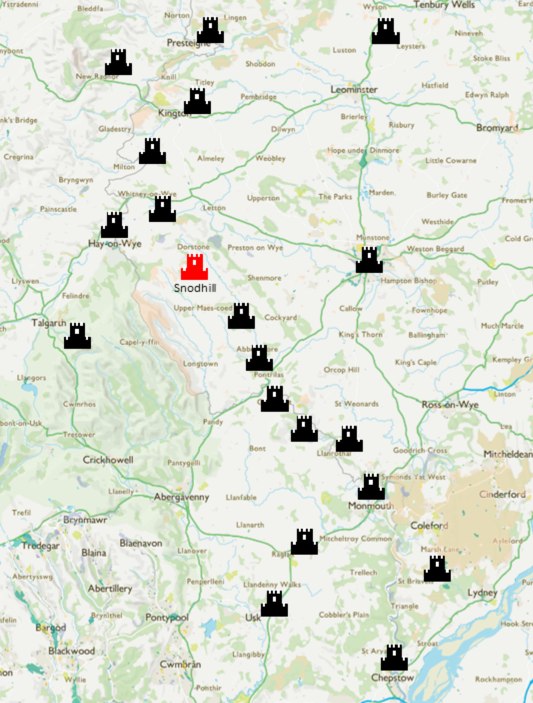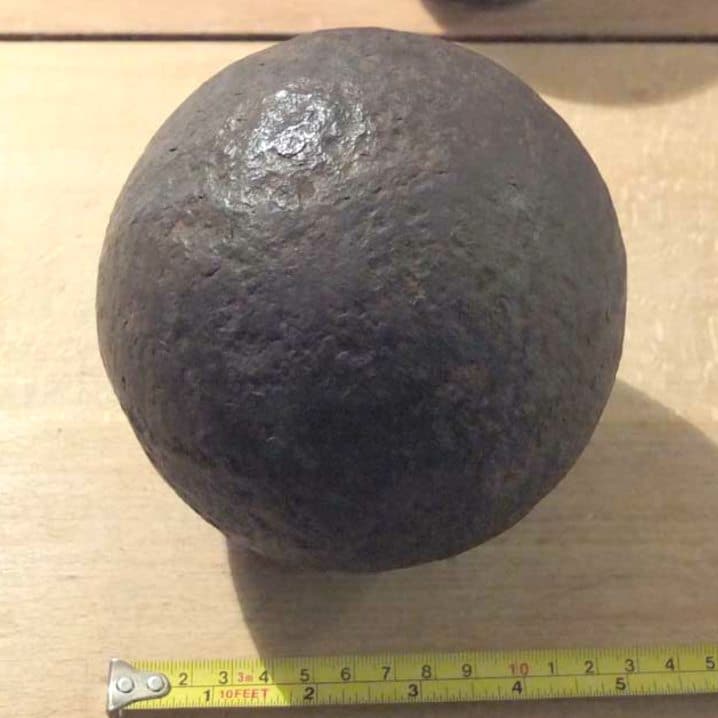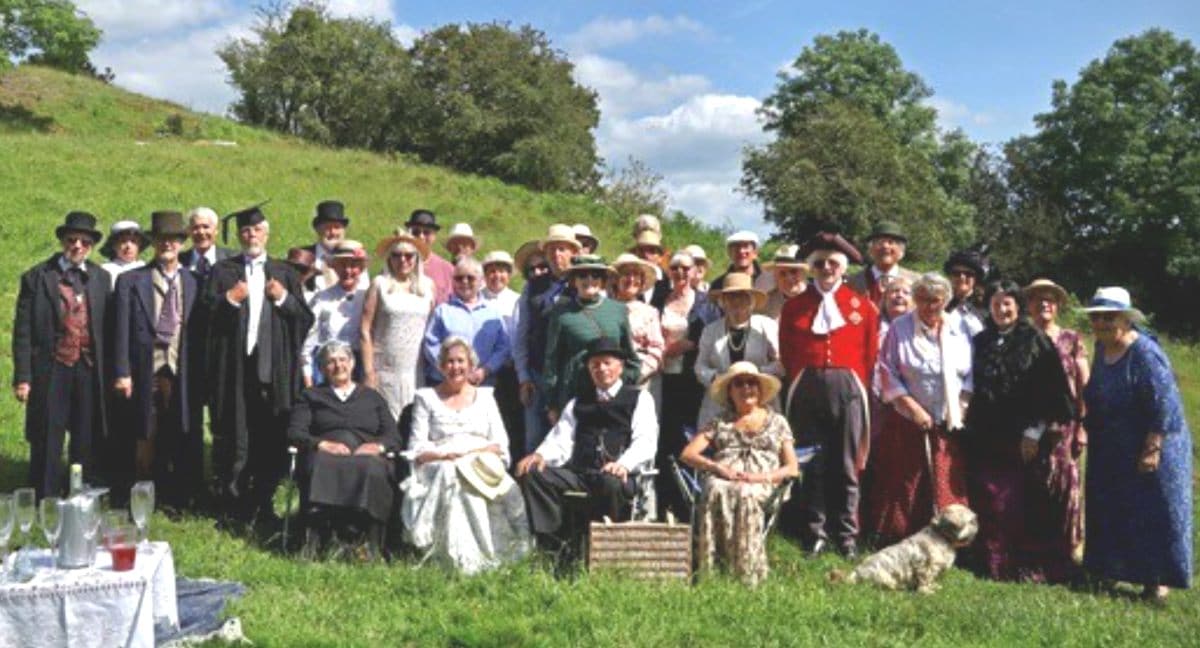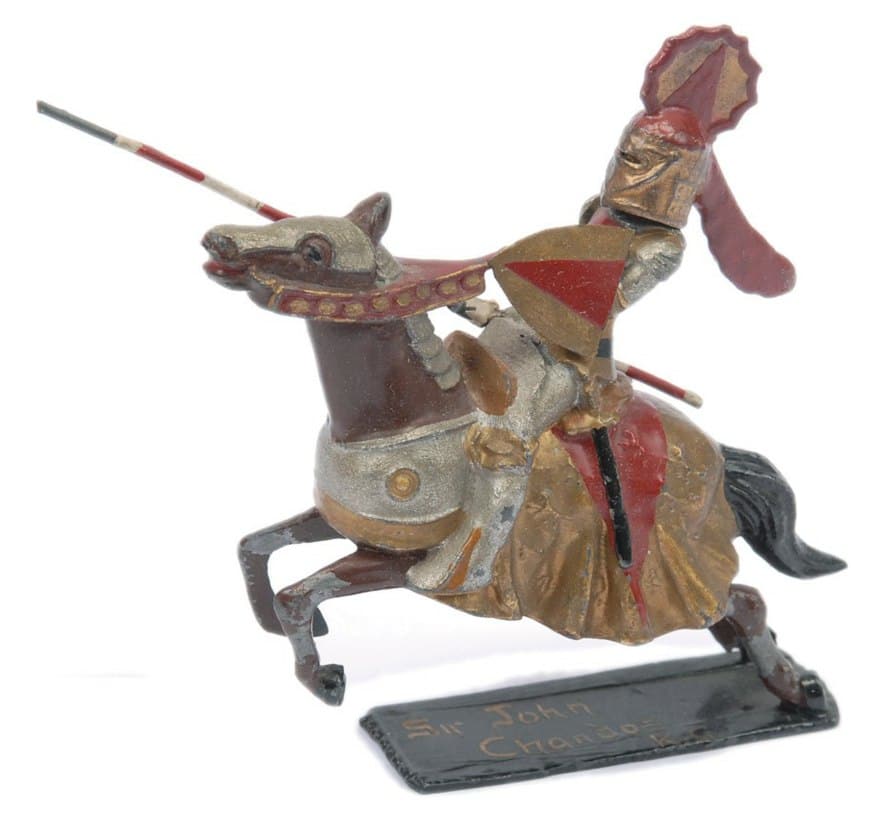History
Snodhill must be the biggest, oldest castle no-one’s heard of. Its size, scale and obvious elan point to a significance far greater than its scant written records do. This much, however, we think we know:
In 2021 we discovered Stone and Bronze age evidence that showed that the ‘Snodhill’ (possible meaning ‘Cleared hill’) was occupied for thousands of years before the Normans arrived. It is also possible that Snodhill is a very rare pre-Norman castle built around 1050 to guard the fertile Dore Valley and its prosperous Saxon villages at Wilmastone, Dorstone, Peterchurch and Mynydd-brith.
What we know for certain is that the castle was built around 1068 by Norman Superknight William Fitz Osbern, 1st Earl of Hereford, who was campaigning to assert Norman control along the Welsh Marches (he built all the early Norman castles from Chepstow to Wigmore).
Fitz Osbern granted the castle to his loyal knight Hugh l’Asne who held it until his death in 1101, when the castle passed to Robert de Chandos (who had married l’Asne’s daughter).

The De Chandos family were loyal supporters of the Crown and as a result often held important administrative and legal roles (justices of the peace, constables and sheriffs) above their station as relatively lowly Knights. They held Snodhill Castle in a more or less unbroken line for 328 years (that is, through some eight crusades, five monarchs, one magna carta, various rebellions and one hundred years war) until 1428 when John de Chandos died.
In 1439 it passed via John Merbury (Sheriff), Walter Mille, and John Daundesey to Richard Beauchamp Earl of Warwick and in 1452 on the accession of Richard Duke of York (King Richard III) it passed to the Crown and became a royal castle.
In 1563 Queen Elizabeth Ist granted it to her favourite Robert Dudley Earl of Leicester he sold the Castle to William Vaughan in 1567 and the castle remained with the Vaughan’s until 1657 when it was sold it to William Prosser, the Prosser family held the Castle into the 20th Century. The Trust is, we reckon, its tenth owner.
LEAD MODEL OF A CHANDOS KNIGHT – WE RETAIN THE CHANDOS COLOURS IN OUR LIVERY
Snodhill Castle’s strategic position, defensive strength, size, and long occupational history would undoubtedly have meant it was involved in the many political disputes and wars along the Welsh Marches; from Eadric the Wild in 1067-1070, the civil wars of King Stephen, Henry II and John’s reigns, the Welsh wars of King Edward I, the troubles of King Edward II’s reign (When the castle was stormed by Roger Mortimer) the Owain Glyndwr raids of 1404-6 (which Snodhill, unlike many other castles, survived) and the War of the Roses (when two successive Constables of Snodhill were killed).
It is uncertain what part Snodhill Castle played in the English Civil War; its then owners the Vaughans were ardent Royalists and tradition has it that the castle was besieged and destroyed by the Earl of Leven in 1645 (cannon balls have been found nearby) and recent discoveries suggest it was still occupied at that time. However it is more likely that the castle was ‘slighted’ (rendered unusable) in 1647 to prevent further military use.

Recent excavations suggest that the castle fabric was systematically dismantled as a reclamation business by William Prosser of Snodhill Court, between 1649 and 1652. He kept back some of the materials for Snodhill Court and its impressive barns and sold the rest.
The intervening centuries are not well documented, but one event of note was the visit by Francis Kilvert, the celebrated local diarist, for a bucolic picnic with friends on the 21st June 1870 – an event commemorated by the Kilvert Society in 2019.
Today Snodhill Castle’s remains include very rare 11th Century walls, portions of its absolutely unique 12th Century 13-sided tower keep with novel twin-turreted entrance; while below in the Inner Bailey the newly-excavated 15th Century North Keep, and the newly-discovered chapel in the SE corner of the Bailey are evidence of multiple phases of development. The discovery in 2019 of window glass and in 2021 of painted wall plaster, medieval artefacts and finely cut stone indicates that the castle had extensive high status accommodation more befitting an Earl or King not the relatively impoverished Chandos family: yet another mystery to explore.






